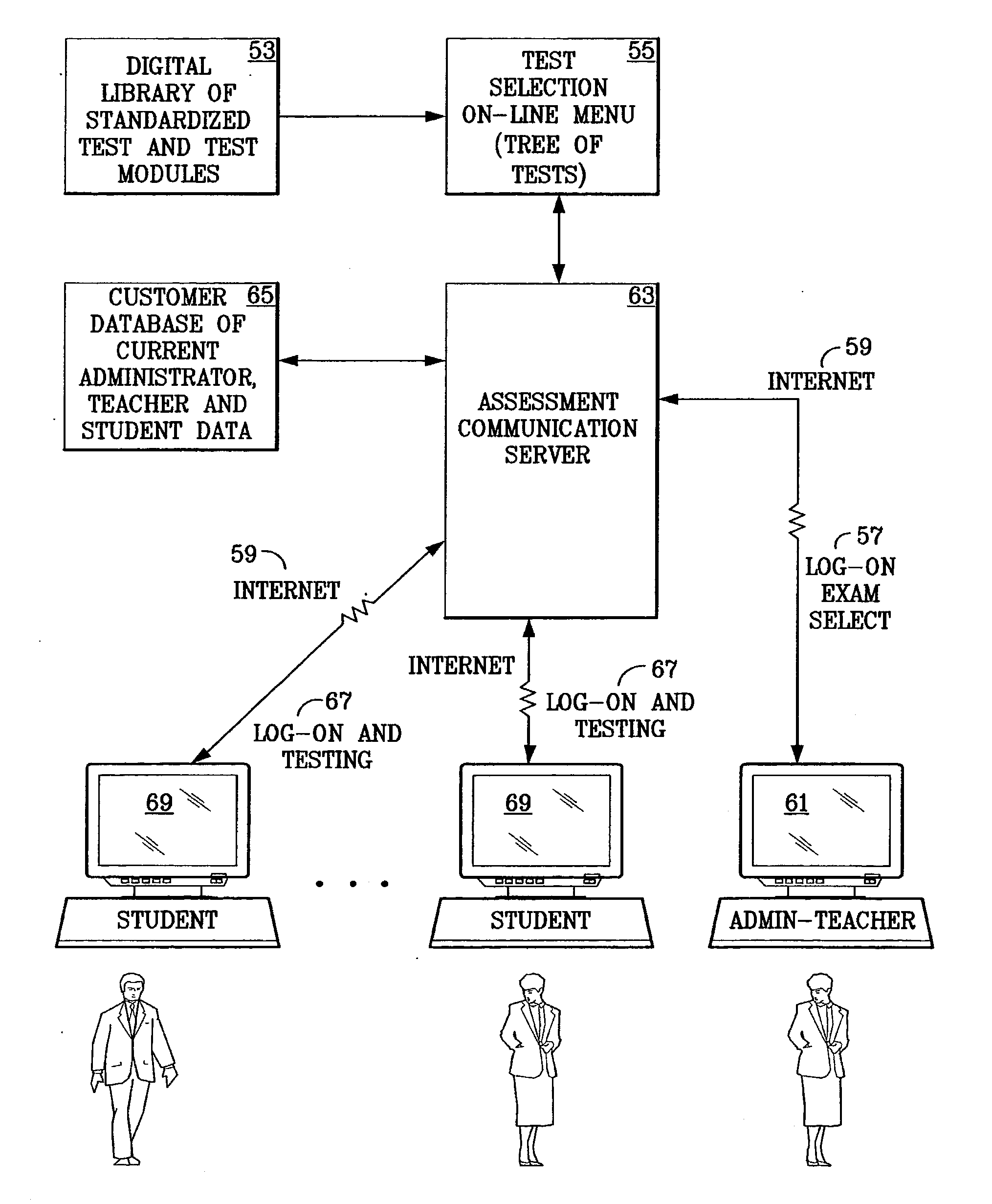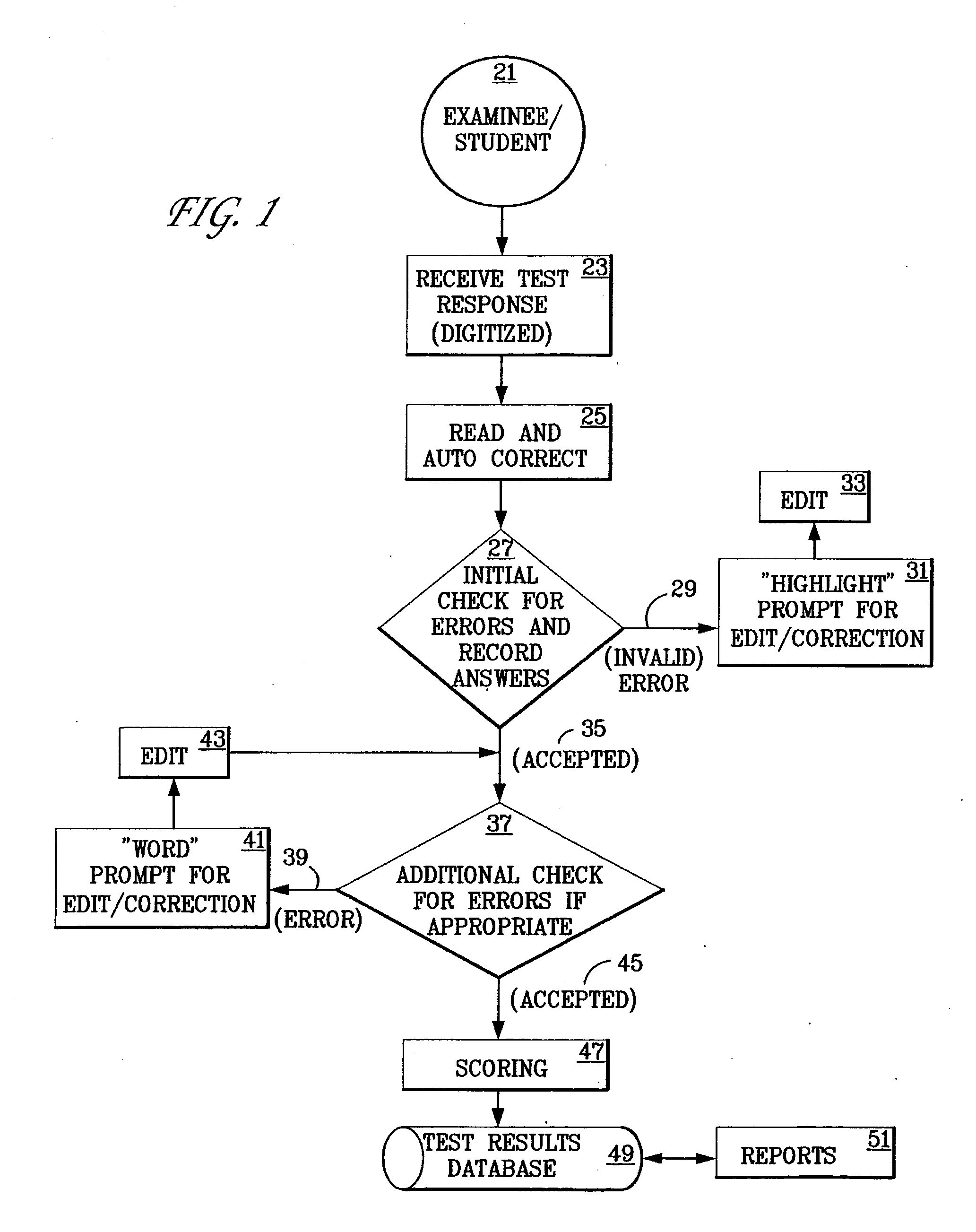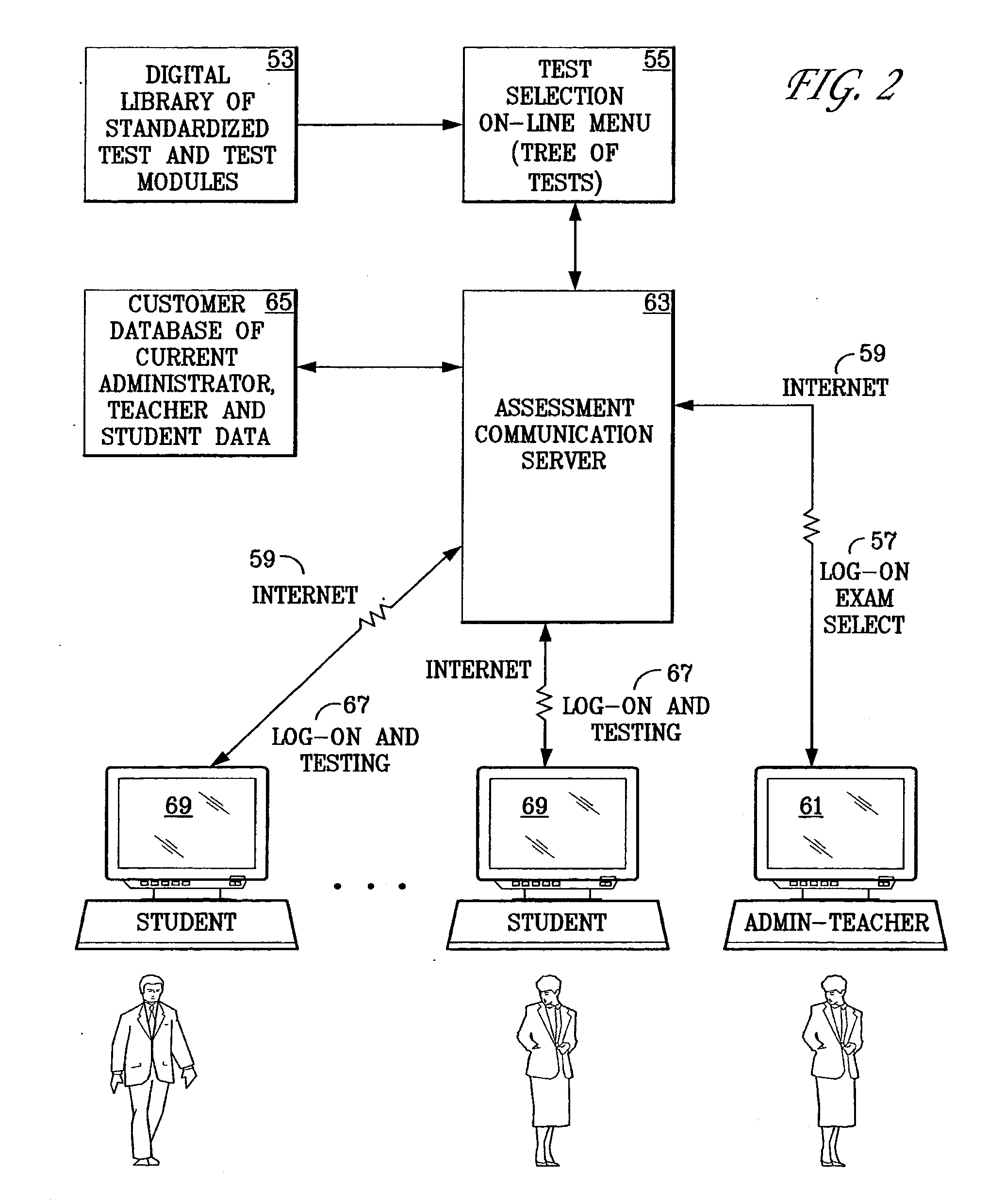Unified Web-Based System For The Delivery, Scoring, And Reporting Of On-Line And Paper-Based Assessments
a web-based system and assessment technology, applied in the field of system and a method for selecting, delivering, scoring, and reporting on standardized achievement tests, can solve the problems of unreadable test sheets, inability of students/examinees to enter identification data properly or leave out identification data, and complex problem of automatic test scoring, so as to reduce processing time and reduce processing time
- Summary
- Abstract
- Description
- Claims
- Application Information
AI Technical Summary
Benefits of technology
Problems solved by technology
Method used
Image
Examples
Embodiment Construction
[0075]The present invention is a computerized system that provides services, utilizing the internet, to a plurality of customers for the selection and delivery of on-line and paper-based standardized tests, for receiving the results of tests for automatically analyzing test records for irregularities and errors, for prompting a scanning workstation editor for editing corrections, for scoring, and for providing interactive reporting of both on-line and paper-based test results, i.e., student or examinee assessments.
[0076]The fundamental work flow for unified testing, scanning, editing, and scoring and reporting is shown in FIG. 1. A student / examinee 21 provides test responses at the end of a testing period. These test responses are digitized 23, either by on-line dialog, scanning at a customer site, or scanning at a plant site, i.e., the system processing center.
[0077]In the case of scanning, the information on an answer sheet is digitized upon scanning and parsed into a linear recor...
PUM
 Login to View More
Login to View More Abstract
Description
Claims
Application Information
 Login to View More
Login to View More - R&D
- Intellectual Property
- Life Sciences
- Materials
- Tech Scout
- Unparalleled Data Quality
- Higher Quality Content
- 60% Fewer Hallucinations
Browse by: Latest US Patents, China's latest patents, Technical Efficacy Thesaurus, Application Domain, Technology Topic, Popular Technical Reports.
© 2025 PatSnap. All rights reserved.Legal|Privacy policy|Modern Slavery Act Transparency Statement|Sitemap|About US| Contact US: help@patsnap.com



